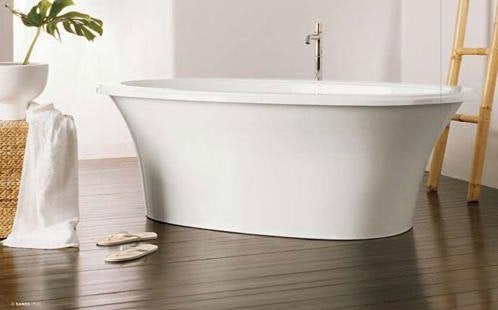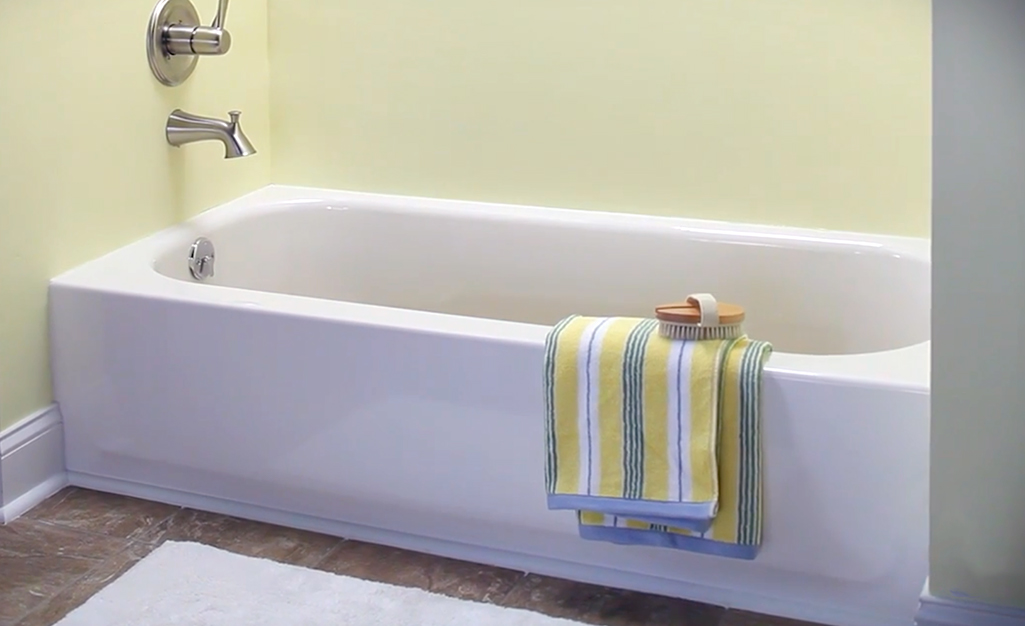What are your ideas with regards to Installing A Bathtub?

Mounting a bathtub isn't precisely rocket science, however it does call for strong plumbing, woodworking, and also sometimes, tiling skills. Replacing an old tub with a new one is likewise a reasonably hard task. If the old bathtub is conveniently obtainable, the job can relocate easily; if you need to open up a wall surface to eliminate the old bathtub as well as position the new bathtub, the task is much harder. In either case, the project is within a home handyman's skills, although you will certainly require an assistant to vacate the old bathtub and also embeded in the new one. Make sure you have qualified on your own for the work and also fit trying it. Rather than hiring a contractor to take over a halfway-completed task, it is far better to take into consideration using one prior to you begin. Chances are you might require an expert plumber to make tube connections.
This article will help you mount a new bathtub in your bathroom if you have actually currently gotten a new tub and do not need to change the setup of your previous water pipelines.
Your tools and product list must make up the following:
Preparing for the Installment
First of all, the supporting structure supplied with the bathroom must be fitted (if required) according to the manufacturer's directions. Next, fit the faucets or mixer to the tub. When fitting the faucet block, it is essential to make sure that if the tap comes with a plastic washing machine, it is fitted in between the bath and the faucets. On a plastic bath, it is additionally practical to fit a supporting plate under the faucets device to avoid strain on the bath tub.
Fit the versatile faucet ports to the bottom of the two faucets using 2 nuts as well as olives (in some cases provided with the tub). Fit the plug-hole electrical outlet by smearing mastic filler round the sink outlet hole, and afterwards pass the outlet with the hole in the bathroom. Utilize the nut provided by the maker to fit the plug-hole. Examine the plug-hole electrical outlet for an inlet on the side for the overflow pipeline.
Next, fit completion of the flexible overflow pipeline to the overflow outlet. Afterwards, screw the pipe to the overflow face which need to be fitted inside the bathroom. Ensure you use all of the supplied washers.
Attach the trap to the bottom of the waste electrical outlet on the tub by winding the thread of the waste electrical outlet with silicone mastic or PTFE tape, as well as screw on the trap to the outlet. Attach the bottom of the overflow tube in a similar manner.The bathroom ought to currently be ready to be suited its final setting.
Removing Old Taps
If you require to replace old taps with brand-new ones as a part of your installation, then the first thing you need to do is disconnect the water system. After doing so, activate the taps to drain any water continuing to be in the system. The procedure of removing the existing faucets can be fairly problematic because of the restricted accessibility that is often the situation.
Make use of a container wrench (crowsfoot spanner) or a tap tool to undo the nut that attaches the supply pipes to the taps. Have a cloth prepared for the remaining water that will originate from the pipelines. Once the supply pipes have actually been gotten rid of, use the exact same device to loosen up the nut that holds the taps onto the bath/basin. You will need to stop the single faucets from transforming during this procedure. Once the taps have actually been gotten rid of, the holes in the bath/basin will certainly have to be cleaned of any type of old securing substance.
Prior to proceeding to fit the new faucets, contrast the pipeline links on the old faucets to the new taps. If the old taps are longer than the new taps, then a shank adapter is required for the new taps to fit.
Setting up the Bath tub
Making use of both wood boards under its feet, position the bath tub in the called for placement. The wood boards are useful in uniformly spreading the weight of the tub over the area of the boards rather than focusing all the weight onto 4 little factors.
The following objective is to make sure that the bath tub is leveled all round. This can be attained by inspecting the spirit level as well as changing the feet on the tub up until the spirit level reads level.
To mount faucets, fit all-time low of the outermost adaptable faucet port to the proper supply pipe by making a compression join; then do the same for the various other faucet.
Activate the water and also examine all joints and also brand-new pipework for leakages and tighten them if necessary. Load the bath tub as well as likewise check the overflow outlet and also the regular electrical outlet for leakages.
Lastly, repair the bath paneling as defined in the producer's instruction manual. Tiling and sealing around the bathtub should wait till the bath tub has actually been made use of at the very least when as this will certainly settle it right into its last placement.
Suitable New Touches
If the tails of the new faucets are plastic, after that you will certainly require a plastic port to avoid damage to the thread. One end of the connector fits on the plastic tail of the faucet and also the various other end supplies a connection to the existent supply pipelines.
If you require to fit a monobloc, after that you will require lowering couplers, which links the 10mm pipe of the monobloc to the conventional 15mm supply pipe.
Next off, place the tap in the placing opening in the bath/basin guaranteeing that the washers remain in area in between the tap and the sink. Safeguard the faucet in place with the manufacturer given backnut. When the tap is securely in position, the supply pipes can be connected to the tails of the faucets. The faucets can either be attached by utilizing corrugated copper piping or with typical tap adapters. The previous kind must be connected to the faucet ends first, tightening up only by hand. The supply pipelines can later on be connected to the various other end. Tighten up both ends with a spanner after both ends have been linked.
Tiling Around the Bathtub
In the location where the bath satisfies the tile, it is needed to seal the accompanies a silicone rubber caulking. This is essential as the fitting can relocate enough to split an inflexible seal, causing the water to pass through the wall in between the bath as well as the tiling, bring about problems with moisture and also possible leakages to the ceiling below.
You can select from a selection of coloured sealants to assimilate your components as well as installations. They are sold in tubes as well as cartridges, and also are capable of securing voids approximately a width of 3mm (1/8 inch). If you have a larger gap to fill up, you can load it with twists of soaked paper or soft rope. Remember to always load the bathtub with water before securing, to permit the movement experienced when the bathtub remains in use. The sealant can fracture fairly early if you do not think about this activity before sealing.
Alternatively, ceramic coving or quadrant ceramic tiles can be utilized to border the bathroom or shower tray. Plastic strips of coving, which are easy to use and cut to dimension, are additionally easily offered on the marketplace. It is suggested to fit the tiles utilizing waterproof or water-proof glue and grout.
Bathtub Installation
How Important Is A Bathtub To Your Home?
High-quality baths, showers, and other bathroom updates are necessary when considering a smart investment in your home. It’s a room that you go to every day and one that is constantly being used by guests.The bathroom is one of the top trafficked rooms in a home and also one of the most valuable in terms of home resale.
Install Piping Before Tub
You will be using your existing drain and waste vent system, but pipes required include the hot and cold water supply lines and a pipe leading to a shower head. A mixing valve and shower head are also needed. Air chambers may be required.
Position the Tub
Lower the tub into place so that the continuous flange fits against the wall studs and rests on 1’x4' or 2’x4' supports. Anchor the tub to the enclosure with nails or screws inserted through the flanges into the studs.
NOTE: Remember, bathtubs and shower stalls may require support framing. A bathtub filled with water is extremely heavy, so check building codes and framing support before installing the tub.
Assemble Drain Connections
Assemble the bathtub drain connections by connecting the tub overflow with the tub drain above the trap, not beyond it. The trap will have a compression fitting that screws over the arm of the overflow assembly.
Place a Pipe For the Shower Head
First, locate a brass female threaded winged fitting and attach it to a framing support via a screw or a nail. Then run a pipe up the wall for the shower head. Sweat or solder the other side of the brass fitting to the top of the pipe.
Attaching Hot and Cold Water Lines
Attach your water lines for both hot and cold by sweating these directly into the hot and cold ports of the mixing valve. The mixing valve will be how water enters the tub’s system, not by the pipes themselves.
Install the Spout
Extend a piece of 1/2 inch pipe, or whichever length is specified in the manufacturer’s instructions, for the tub spout. Sweat on a male threaded fitting at the end of the pipe or use a brass nipple of the proper length and a 1/2 inch cap.
NOTE: At this point you should have your rough-in plumbing work inspected before proceeding further.
Check For Leaks
Restore the water pressure and check the drain connection and the supply pipes for any sign of leaking.
estore the Bathroom Wall
Replace the wall with moisture-resistant drywall as a base for your wall covering. Seal the joints between the wall and your new tub with silicone caulk as protection against water seepage.
https://www.berkeys.com/2016/12/02/bathtub-installation-dallas/

I'm certainly very serious about Tools You Need to Install a New Bathtub and I am hoping you enjoyed the entire post. Enjoyed our piece? Please share it. Help someone else locate it. Thanks for your time. Visit again soon.
Contact Us